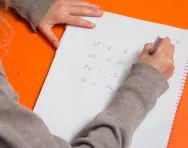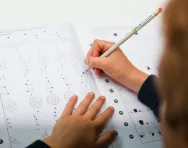Important update from TheSchoolRun
For the past 13 years, TheSchoolRun has been run by a small team of mums working from home, dedicated to providing quality educational resources to primary school parents. Unfortunately, rising supplier costs and falling revenue have made it impossible for us to continue operating, and we’ve had to make the difficult decision to close. The good news: We’ve arranged for another educational provider to take over many of our resources. These will be hosted on a new portal, where the content will be updated and expanded to support your child’s learning.
What this means for subscribers:
- Your subscription is still active, and for now, you can keep using the website as normal — just log in with your usual details to access all our articles and resources*.
- In a few months, all resources will move to the new portal. You’ll continue to have access there until your subscription ends. We’ll send you full details nearer the time.
- As a thank you for your support, we’ll also be sending you 16 primary school eBooks (worth £108.84) to download and keep.
A few changes to be aware of:
- The Learning Journey weekly email has ended, but your child’s plan will still be updated on your dashboard each Monday. Just log in to see the recommended worksheets.
- The 11+ weekly emails have now ended. We sent you all the remaining emails in the series at the end of March — please check your inbox (and spam folder) if you haven’t seen them. You can also follow the full programme here: 11+ Learning Journey.
If you have any questions, please contact us at [email protected]. Thank you for being part of our journey it’s been a privilege to support your family’s learning.
*If you need to reset your password, it will still work as usual. Please check your spam folder if the reset email doesn’t appear in your inbox.
Year 7 CATs: what every parent needs to know

Contents
Why do some schools use CATs and SATs?
Can I help my child prepare for Year 7 CATs?
What are verbal reasoning questions?
What are non-verbal reasoning questions?
Year 7 CATs results explained
What are CATs?
Most secondary schools use Cognitive Abilities Tests, CATs, to test general intelligence and to stream overall or set for certain subjects. They are designed to assess a pupil’s ability in three different areas: verbal (thinking with words); quantitative (thinking with numbers); and non-verbal (thinking with shapes and space).
CATs can also be used in primary school: in many schools assessment in non-SATs years (Year 1, 3, 4 and 5) takes the form of ongoing teacher assessments or internal tests, but some primary schools opt to use formal CATs tests instead.
My child has already taken SATs, so what’s the point of CATs?
Some secondary schools don’t like to assess pupils solely by their maths, English and science SATs results in Year 6. They feel some primary schools ‘over-coach’ for the tests, so some children may have artificially high results.
Educational psychologist Conrad Martin says, “In my professional experience, secondary schools take no notice of SATs – they find them too crude a measure, so they get their own measure of a child’s underlying abilities. They can use CATs to see if a child is under-achieving or whether there are learning difficulties. The tests can also pick up on reasons behind possible behavioural difficulties – perhaps a child is frustrated because they don’t understand the work, for example.”
CATs are used to give a snapshot of a child's potential, what they could achieve and how they learn best. The results can help teachers to set the right learning pace for each child, monitor their progress and identify areas where they might need extra support.


Year 6 to 7 transition packs
- English & Maths packs
- Practise journalistic writing, figurative language, persuasive text and more
- Revise key maths methods and concepts
Can I help my child prepare for CATs?
Officially, no. The tests are designed to be taken without any revision or preparation so they can assess a child’s potential in his or her ability to reason. CATs are not testing children's knowledge and understanding as a maths or English exam might, so they can't ‘learn’ how to answer the questions.
Though many parents feel familiarity with the format and style of the test would improve their child’s performance, past CATs papers are not available for parents to buy from any official assessment body. Conrad Martin warns, “I think helping your child will not have anything other than an insignificant impact on the actual performance in the CATs test. You can help children be familiar with the sort of format, but a brighter child will be quicker at picking it up.”
If you would like to understand more about the kind of questions asked in the CATs, reading up about verbal reasoning and non-verbal reasoning will be useful; TheSchoolRun also offers an introduction to verbal and non-verbal reasoning for children taking selective school and 11+ tests.
What are verbal reasoning questions?
Your child may come across verbal reasoning questions in their Year 7 CATs. Verbal reasoning essentially means thinking with words.
This type of reasoning includes activities like analysing text, solving word puzzles, following written instructions to find solutions, identifying letter sequences and decoding letter- and number-based codes. Verbal reasoning tests aim to assess a child's ability to understand and reason with words, focusing on skills rather than knowledge.
The idea behind these tests is that they help the examining body gauge a child's potential for critical thinking, problem-solving and overall intelligence.
What kinds of questions are typically included?
- Finding one letter that completes two words (e.g., hoo(D)oor)
- Identifying a word hidden within another word (e.g., dePENd)
- Spotting the odd word out in a list (e.g., apple, pear, banana, CREAM, PUDDING)
- Matching words with the same meaning from two lists (e.g., PLAIN/expensive/rich and SIMPLE/money/earnings)
- Finding antonyms from two lists of words (e.g., IN/on/over and through/between/OUT)
- Decoding a code where each letter is represented by another letter or number (e.g., A becomes B, B becomes C, C becomes D, so ‘cat’ would be written as ‘dbu’)
What are non-verbal reasoning questions?
Your child may come across non-verbal reasoning questions in their Year 7 CATs. Non-verbal reasoning focuses on problem-solving using pictures, diagrams, and shapes rather than words. Unlike verbal reasoning, it does not heavily depend on the English language; instead, it involves interpreting drawings, shapes, or codes, and requires identifying sequences, similarities and differences between these figures or deciphering a code.
These questions are intended to assess a child's ability to use critical thinking and logic to solve problems, providing an indication of their mathematical skills and deductive reasoning. The theory is that the examining body can better understand a child’s potential and intelligence, rather than their acquired knowledge.
What types of questions are included?
Non-verbal reasoning test questions are based on mathematical concepts such as symmetry, rotation, mirroring, shape, size, and direction, and use diagrams instead of words. Typical questions include:
- Spotting the odd shape out (e.g., a four-sided shape among three-sided shapes)
- Determining what a shape would look like when folded
- Identifying the mirror image of a given shape
- Figuring out the next diagram in a sequence (e.g., a series of rectangles divided into squares with progressively more squares shaded)
- Finding two identical shapes in a set of five shapes
- Identifying what a shape would look like when rotated by 90 degrees
What do CATs results mean?
The result will be given in SAS (Standardised Age Scores) so they take into account a pupil’s age. The average SAS is 100. The scores are used to calculate predicted levels and can also be used to predict the outcome of GCSEs. If there is a wide variation between the scores in different aspects of the test, this may flag up a child who is experiencing difficulties in one area and can lead to a diagnosis, such as dyslexia. Extra support can then be put in place to help the child.
What if my child does badly?
Don’t be dismayed if your child does poorly in CATs – poor results don’t mean your child is destined not to achieve well. "There are many other factors which influence how a pupil does at school," confirms Conrad Martin. "Motivation and hard work are very important, as is parental support. I would urge a note of caution in interpreting CATs scores because there is a significant margin of error associated with such scores, especially with a group test."








